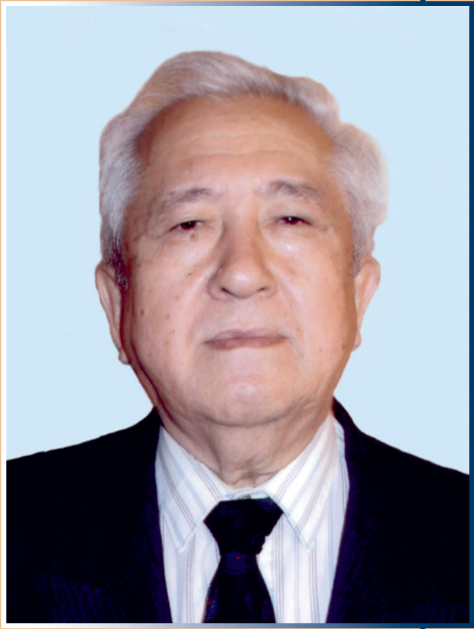
The chief geologist... His name is associated with making decisions on problematic, sometimes fateful issues in the oil and gas industry. Often, chief geologists are referred to as production commanders, sometimes as strategists, even hailed as commanders of the underground reconnaissance army.
However, they are described or compared, the significance of these comparisons corresponds to the substance of their achievements. Thanks to the efforts of oil prospectors, among whom their leaders – chief geologists – stood at the forefront, Kazakhstan was able to stand firmly on its feet after gaining independence, and its economy is developing successfully.
One of the notable representatives of Kazakhstan’s chief geologists cohort is the laureate of the State Prize of the USSR, Honored Subsoil Explorer of the Republic of Kazakhstan, Saduakas Kurmanov. He became chief geologist very early, just a year and a half after graduating from the S.M. Kirov Kazakh State University, in the distant year of 1961, at the age of 23.
The organization where he was first appointed to such a responsible position was called the Makat Drilling Office. It was engaged in the search and exploration of oil deposits in the central part of the Caspian Depression, in the area of developed subsalt deposits. At Kurmanov’s initiative, subsoil prospectors began exploration in the poorly studied coastal zone of the Ural-Volga interfluve. As a result, a promising oil and gas-bearing area was discovered. Its first offspring – the Martyshe oil field – was discovered in the spring of 1962, and by the end of the year, S. Kurmanov was invited to the Ministry of Geology and Subsoil Protection.
In 1972, S. Kurmanov was appointed Chief Geologist of the newly created Kazakhstan Oil and Gas Exploration Management, which conducted large-scale studies of subsalt deposits in the Caspian Depression, received the first inflows of subsalt oil in the areas of West-Teplovsky in the north of the depression, Kenkiyak, Karatobe in the east, and Tortay in the southeast. Subsequently, the largest deposits in the region were discovered from these deposits, first the Zhanazhol group of deposits, then Karachaganak and Tengiz. And in 2002, the largest subsalt deposit Kashagan, included in the top five largest on earth. Another important achievement of the chief geologist during that period was that he initiated exploration work on the Bozashy Peninsula, which at that time, according to the local KazNIGRI institute, was considered unpromising. Here, in 1974, in the Karazhanbas area, a high-flow oil fountain was obtained from well No. K-12, announcing the discovery of another new large oil and gas-bearing area in the region. This was followed by the discovery of the Northern Bozashy, Zhalgiztobe deposits, and in 1975, Kalamkas with its three hundred million recoverable reserves. Based on these discoveries, new oil and gas production departments were created in the region – “Kalamkasneft”, “Karazhambasneft”.
In 1978, S. Kurmanov was sent to Afghanistan as the chief geologist of a team of Soviet geologists and oil workers. There, despite the difficulties caused by the onset of hostilities, his efforts led to the discovery of the new Zamradsay oil field and the Zhagali-Kolon gas field, work was carried out that significantly increased the reserves of previously discovered Kashkari oil fields. Upon his return from Afghanistan, Kurmanov was appointed chief geologist of the newly created production association “Kazgeophysics”. With his participation, a new oil and gas-bearing area with the Kumkol, Maibulak, Aryskum, Kzylkia, Akshabulak, Konys, Bektask, Aksai, Nuraly, Ashisay, and other fields was discovered. Based on these deposits, a new oil-producing association “South Kazneftegas” was subsequently created in the region. Kurmanov was also involved in science. In 1969, he became a candidate, in 1991 – a doctor of geological and mineralogical sciences. In 1994, he was awarded the title of professor. Having worked for more than 40 years as chief geologist, Kurmanov participated in the discovery of three new large oil and gas-bearing areas and more than 100 fields. All three discoveries, in which Kurmanov was involved, were nominated for various State Prizes. In 1975, the Mezhdurechensky district was nominated for the State Prize of the Kazakh SSR. The work was rejected because the previous head of the State Prize Committee, Sh.E. Yesenov, was approving of the work, which did not sit well with his successor. In 1981, the Bozashy discovery was nominated for the USSR State Prize. Mingeo, led by a graduate of the aforementioned KazNIGRI, almost excluded S. Kurmanov from the list of candidates for showing “excessive” independence in deciding to conduct exploration work in the Bozashy area, which overshadowed Mingeo’s role. Only thanks to the intervention of the then Secretary of the Central Committee of the Communist Party of Kazakhstan N.A. Nazarbayev, he managed to achieve justice and defend his well-deserved prize.
Other news


